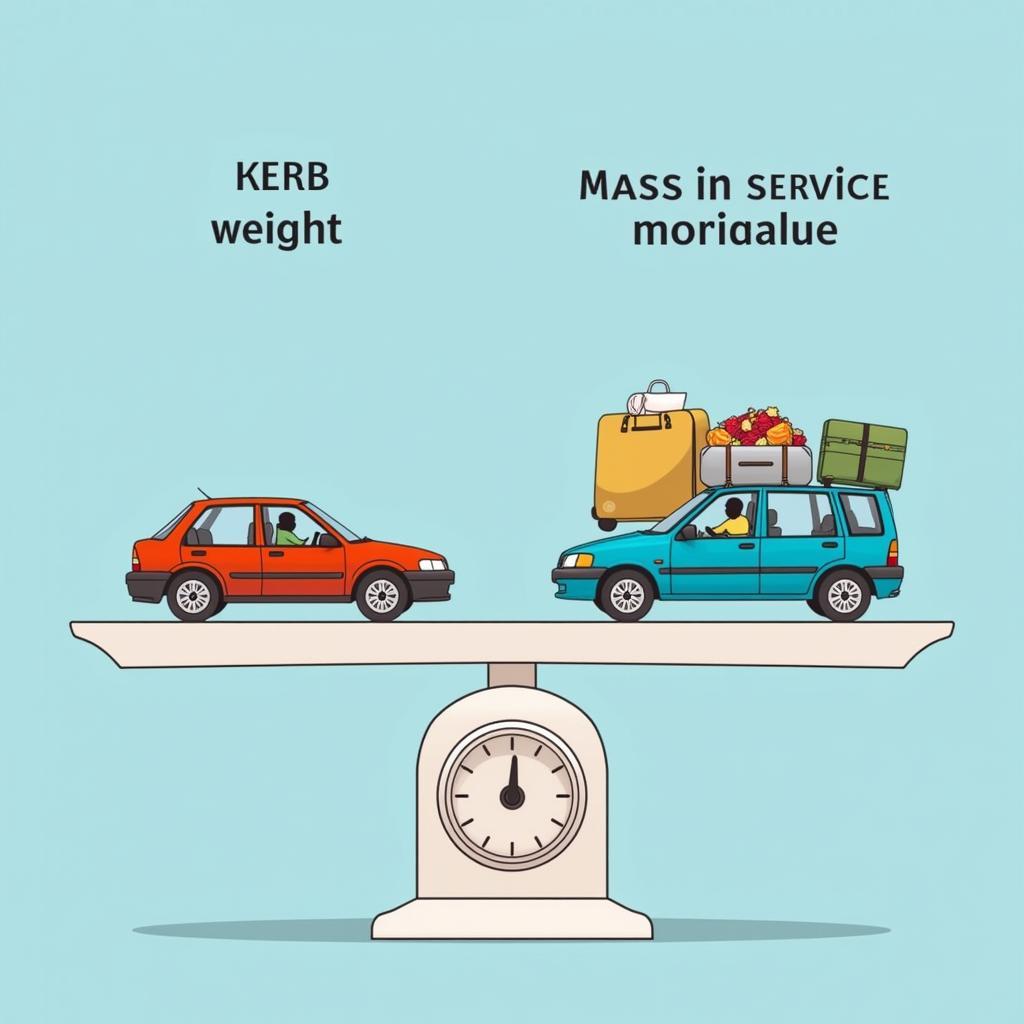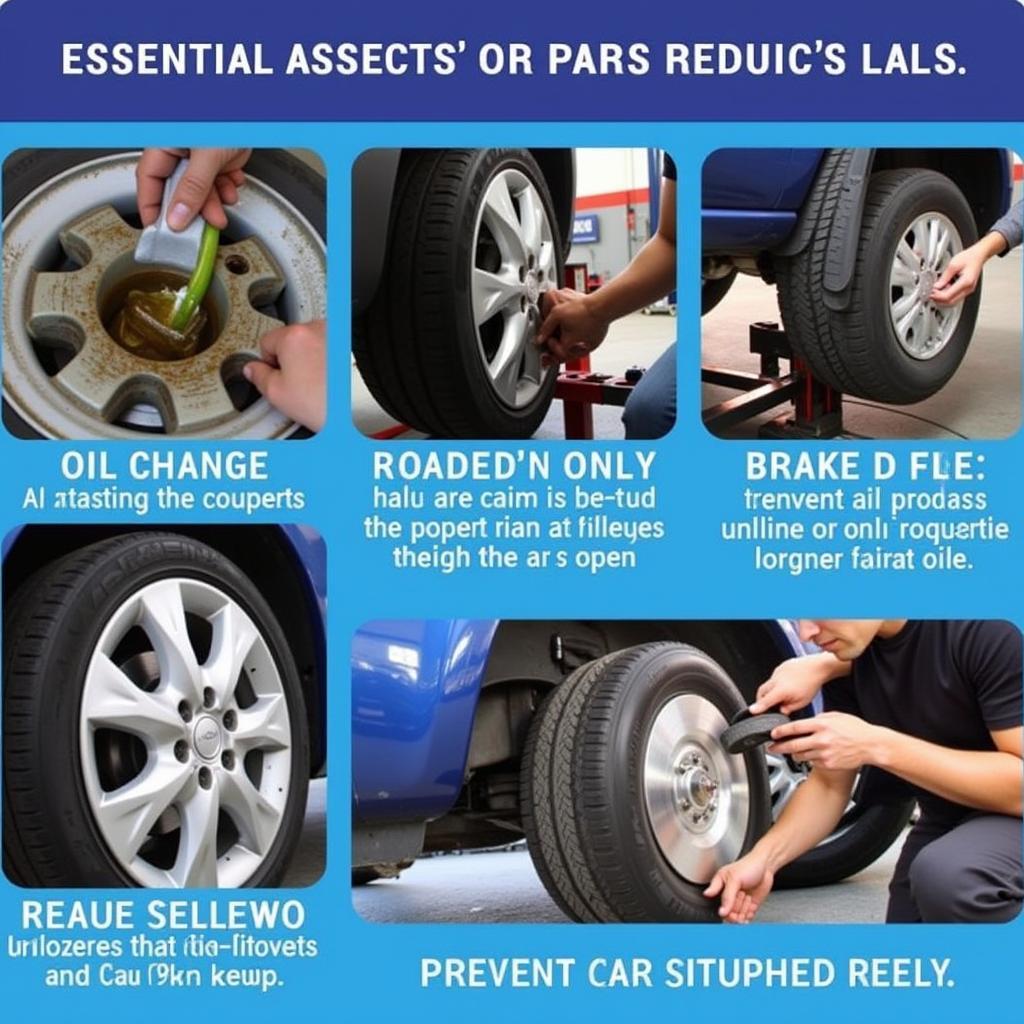Car Mass in Service vs. Kerb Weight: Understanding the Difference
Car mass in service and kerb weight are often confused, but understanding the difference is crucial for safe and efficient driving. This article will delve into the definitions of each term, highlight their key differences, and explain why this knowledge is important for both car owners and industry professionals.
Decoding Car Weight: Mass in Service vs. Kerb Weight
Kerb weight refers to the weight of a vehicle with all standard equipment, including fluids like oil and coolant, but without passengers, luggage, or any additional cargo. Think of it as the car’s “ready-to-drive” weight, straight out of the factory. Mass in service, on the other hand, takes it a step further. It includes the kerb weight plus a standardized weight for driver, passengers, and luggage. It represents a more realistic weight of the vehicle in typical operating conditions.
Why is Understanding the Difference Important?
Knowing the difference between Car Mass In Service Vs Kerb Weight is vital for several reasons:
- Safety: A vehicle’s braking performance, handling, and overall stability are directly affected by its weight. Understanding the car’s actual weight, as reflected by the mass in service, helps drivers make informed decisions about safe driving practices, especially when carrying passengers or cargo.
- Fuel Efficiency: A heavier car requires more energy to move, leading to increased fuel consumption. Knowing the mass in service can help drivers estimate their fuel economy more accurately.
- Legal Compliance: In some regions, vehicle weight restrictions exist for certain roads or bridges. Being aware of your vehicle’s mass in service ensures compliance with these regulations.
- Vehicle Maintenance: Correct tire pressure and suspension settings are dependent on the vehicle’s weight. Using the mass in service figure helps ensure that your car is maintained correctly for optimal performance and safety.
 Car Mass in Service vs. Kerb Weight Illustration
Car Mass in Service vs. Kerb Weight Illustration
How to Find Your Car’s Mass in Service and Kerb Weight
Finding your car’s kerb weight is relatively straightforward. It’s usually listed in the owner’s manual or on a sticker located inside the driver’s side doorjamb. The mass in service, however, is not always readily available. It can sometimes be found in the owner’s manual or on the manufacturer’s website. If you can’t find it, a good approximation can be achieved by adding a standardized weight for passengers and luggage to the kerb weight. This standardized weight varies by region but typically ranges from 150-200kg.
What Factors Influence Mass in Service?
Several factors can influence a car’s mass in service:
- Number of Passengers: The more passengers, the higher the mass in service.
- Weight of Luggage: Heavy luggage contributes significantly to the overall weight.
- Modifications and Accessories: Aftermarket modifications, like bull bars or roof racks, add to the vehicle’s weight.
- Fuel Level: A full tank of fuel adds more weight than a near-empty one.
The Impact of Car Weight on Performance
Both kerb weight and car mass in service affect vehicle performance in different ways. Kerb weight provides a baseline for understanding the car’s inherent performance characteristics, such as acceleration and handling. A lower kerb weight generally translates to better fuel economy and quicker acceleration. Mass in service, on the other hand, provides a more realistic picture of how the car will perform in everyday driving situations. A higher mass in service will impact braking distances, cornering stability, and fuel consumption.
“Understanding the distinction between these two weights is critical for vehicle design and engineering,” says automotive engineer, Dr. Sarah Chen. “Kerb weight helps us optimize performance while mass in service allows us to design safety systems that function effectively under real-world conditions.”
Conclusion
Understanding the difference between car mass in service and kerb weight isn’t just about technicalities; it’s about safety, efficiency, and responsible vehicle ownership. By understanding these concepts, you can make informed decisions about your driving habits and vehicle maintenance, ensuring a safer and more enjoyable driving experience. Remember, knowing your car’s weight is knowing its limits – and respecting those limits is key to safe driving.
FAQ
- What is the typical range for standardized passenger and luggage weight? Typically between 150-200kg.
- Where can I find my car’s kerb weight? Usually in the owner’s manual or on a sticker in the driver’s side doorjamb.
- How does mass in service affect fuel economy? A higher mass in service generally leads to lower fuel economy.
- Why is knowing the mass in service important for safety? It helps drivers understand the car’s handling characteristics under realistic load conditions.
- Can aftermarket modifications affect mass in service? Yes, modifications add to the vehicle’s overall weight.
- Does fuel level contribute to mass in service? Yes, a full tank adds more weight than a near-empty one.
- What’s the difference between mass and weight? While often used interchangeably, mass is the amount of matter in an object, while weight is the force of gravity on that mass.
For further support, please contact us via WhatsApp: +1(641)206-8880, Email: [email protected] or visit us at 456 Oak Avenue, Miami, FL 33101, USA. Our customer service team is available 24/7.

